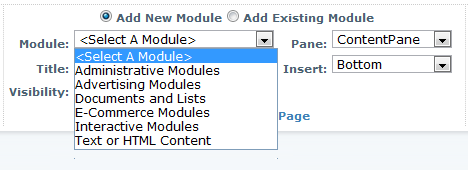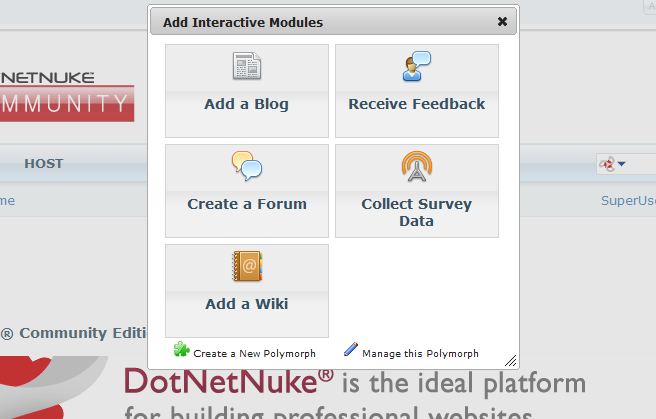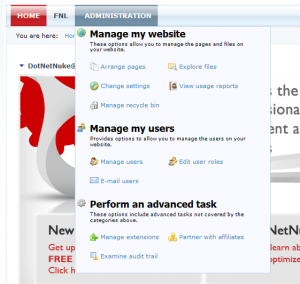Release: Cross-Portal Symbolic Link Folder Provider
ø
I am pleased to announce a beta release of my cross-portal symbolic link folder provider. It may be downloaded via CodePlex on its project homepage. As is all of my DotNetNuke work, this project is fully open-source and available under a liberal BSD license.
The DotNetNuke content management system is designed with multi-tenancy in mind, and allows an arbitrary number of websites (“portals”) to be created therein. These portals may be configured at the root of a given domain (e.g., “http://dotnetnuke.com”) or as a child portal below the root of a portal hierarchy (e.g., “http://dotnetnuke.com/mychildportal”). Historically these child portals have had no structural link to their parent counterpart, other than sharing a similar base URI.
This provider is designed to expose the file system in a parent portal to all child portals via specially-formed symbolic links. This allows administrators of child portals to access and utilize these files in a natural manner via existing dialogs and other DotNetNuke services. It creates an implicit linking between these two portal entities, and in configurations where there is significant overlap in data usage between parent in child portal (for example, when a child portal represents a single department within a larger corporate environment) allows for greatly simplified administration. (more…)





